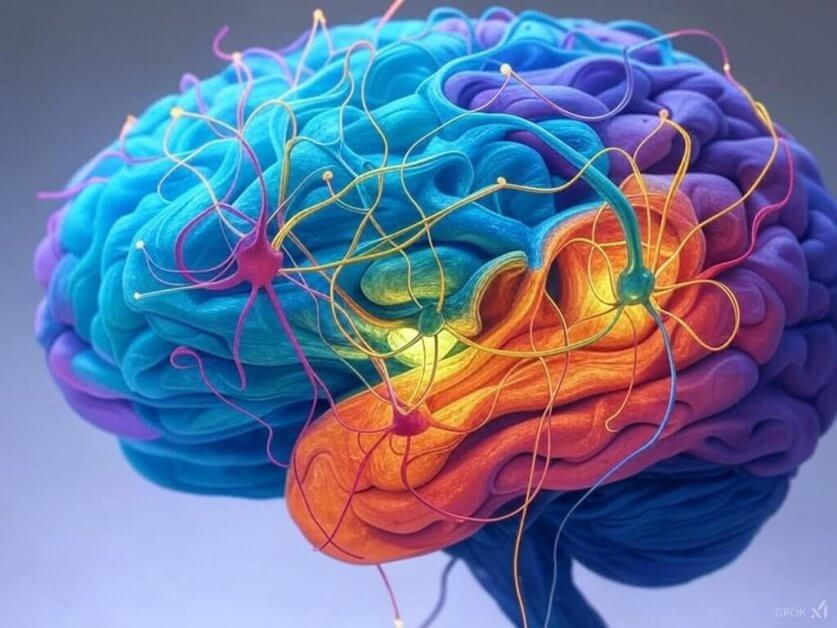
How Exercise Helps The Brain – From Brain Health To Cognitive Performance
Learn how exercise helps the brain, from reduced inflammation, slowed brain aging, and improved cognitive performance.
In a world increasingly dominated by digital interactions, social media has woven itself into the fabric of our daily lives, often blurring the line between harmless engagement and compulsive overuse.
This article is for those struggling to overcome their compulsive social media use. We will delve into the intricate web of social media addiction, a phenomenon that, while not formally recognized as a medical condition, poses a significant challenge to many, often inducing anxiety and stress that affect other facets of life.
As we navigate its complexities, we will examine the habit loop and address the unique triggers and rewards that social media platforms ingeniously tap into to keep you hooked.
What many know as social media addiction refers to a behavioral addiction characterized by an overwhelming compulsion to engage with social media platforms, leading to significant disruptions in critical areas of life such as relationships, academic or professional performance, and physical well-being.
The meaning of addiction varies, especially in medical contexts. The DSM-5, a key resource for psychiatric diagnoses, does not officially recognize social media addiction as a medical condition, nor does it recognize internet addiction disorders in general. However, the American Psychiatric Association (APA) has identified Internet Gaming Disorder (IGD), often referred to as video game addiction, as a condition that merits further investigation.
Despite the lack of formal medical recognition, disconnecting from social media is a real struggle for many, attributed to the highly addictive nature of social media applications. While it may not yet be a recognized medical condition, its growing presence and disruptive effects are being closely monitored.
This study surveyed 34,798 individuals across 32 countries, encompassing seven global regions, and uncovered significant data and patterns in social media addiction.
The study revealed that the average rate of what it defined as “moderate addiction” to social media was 24%, which is notably high. The lowest addiction rates were seen in Western and Northern Europe at 8%, while the highest were in Africa and Asia, at 37% and 31%, respectively.
Fascinatingly, in collectivist societies, which value group needs over individual desires, the addiction rate was 31%, in contrast to 14% in individualist societies, which emphasize personal freedom and self-interest.
Regarding age demographics, the younger population showed a higher addiction rate: 35% in adolescents, 23% in university students, and 19% in adults.
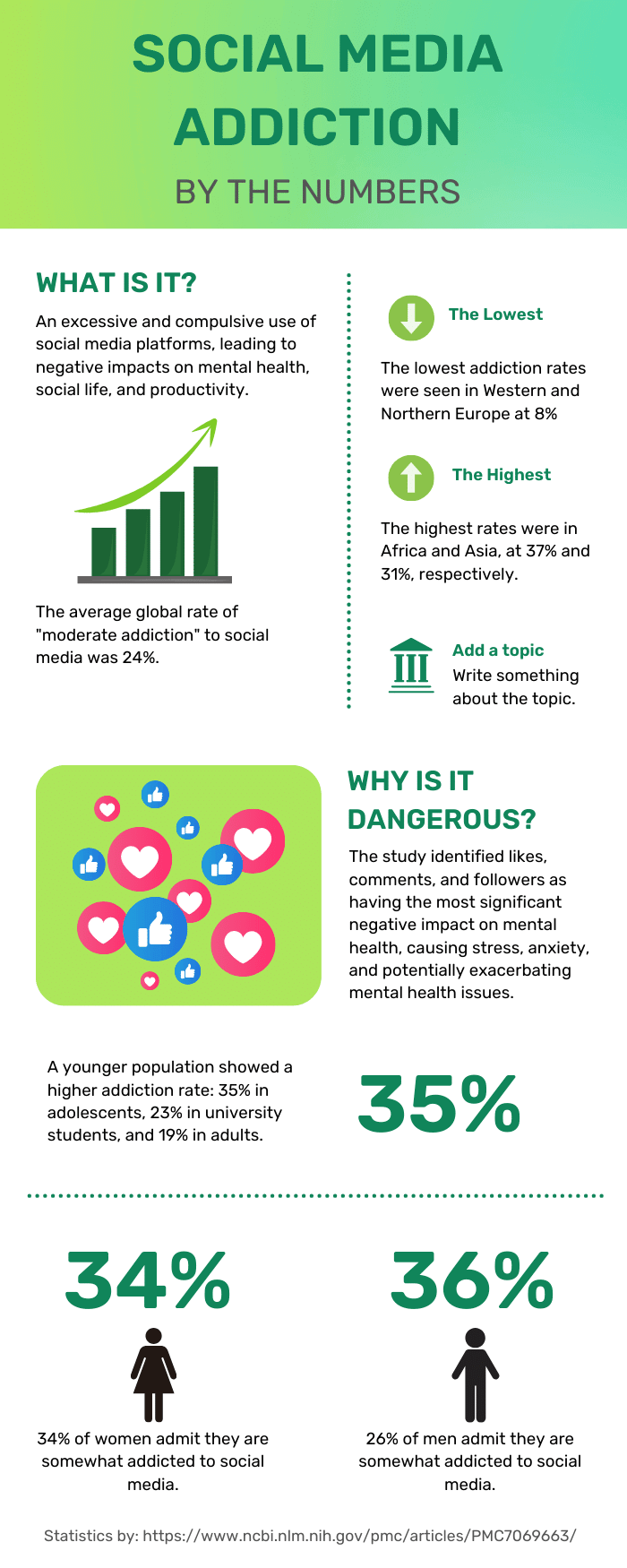
The symptoms of social media addiction vary between individuals, the extent of their addiction, and the type of social media used.
This study, however, defined addictive use of social media based on the nine symptom criteria for Internet Gaming Disorder (IGD) and Social Media Disorder (SMD), as outlined in the DSM-5.
These criteria include preoccupation, withdrawal, tolerance, unsuccessful attempts to control, loss of interest, continued excessive use, deception, escape, and jeopardizing career/relationships.
These criteria might manifest themselves in the following ways.
Frequent and compulsive urges to check social media results in extended periods of use without a sense of time passing. Spending inordinate amounts of time on social media often leads to the detriment of other activities, disrupting daily responsibilities, including work, school, and personal relationships. Once-enjoyed hobbies are forgotten in favor of social media.
Aimlessly browsing through social media feeds without real interest or engagement is a staple of social media addiction, driven by an unconscious quest for the fleeting happiness once gained from these platforms.
As the brain gets used to dopamine surges from the instant gratification of social media, the same activity becomes less satisfying when repeated, resulting in prolonged, unsatisfying scrolling to recapture initial feelings of enjoyment.
Individuals often feel guilty about the excessive time and effort spent on social media, particularly when it comes at the expense of more meaningful or productive pursuits. Guilt can intensify when realizing that social media use is less rewarding than other activities, yet there’s a struggle to decrease engagement.
Anxiety and stress can stem from various sources, like the fear of missing out (FOMO), the need for social validation, or concerns about online interactions. This anxiety can create a cycle where individuals use social media to alleviate these feelings, only to find that it intensifies their anxiety.
Common in many addictions, these feelings often arise when social media interactions don’t deliver the anticipated pleasure or reward.
Users might continue using social media out of habit or in the hope of achieving the desired emotional response, but frustration often takes hold by the realization that their time could be better spent on more rewarding activities, leading to internal conflict and irritability and preventing a sense of inner peace.
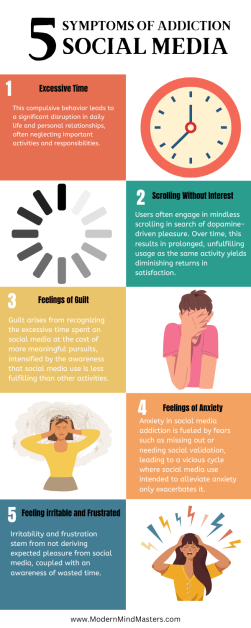
Addictions can be either substance-based, such as drugs, tobacco, and alcohol, or behavioral, such as gaming, gambling, and overeating.
Brain imaging studies from substance addictions, such as drug use, show decreased activity in the prefrontal cortex. If the prefrontal cortex is malfunctioning, individuals struggle to decide to quit using the drug despite being aware of its severe repercussions. Yet, despite these significant risks, they continue to use the drug.
While substance addictions can be extremely difficult and even life-threatening to stop due to their biological effects on the body and brain, behavioral changes require a different approach.
To change bad behavior, we need to look to the already established field of habit formation. James Clear, author of one of the most famous and widely read books on habits and behavioral change “Atomic Habits”, states that to remove bad habits (such as social media overuse), we need to first introduce a better habit in its place.
When attempting to kick bad habits, most fail for lack of understanding that simply removing the habit without replacing it will leave a vacuum of time and urges that will almost certainly be filled by another habit, potentially just as bad or worse. Instead, we need to manually introduce a new habit to fill the void, preferably with something more beneficial.
To do this, follow these three tried and tested steps to break a social media addiction/habit.
James Clear describes the habit loop as a three-step cycle: Cue (trigger), routine (behavior), and reward.
The first of these, the cue, relates to the trigger that initiates the behavior or habit (in this case, the need to use social media).
The problem is the trigger could be anything, and there may be multiple. It could be a specific time of day (such as your lunch break at work creating the urge to open up Facebook), a location (such as your workstation), or an emotional state (such as feeling anxious or stressed). Your trigger can be anything immediately preceding an action that signals your brain to perform it.
Naturally, our aim should be to eliminate the trigger(s) that initiates the action. Before you can remove them, however, you must first identify them, which will be unique to your circumstances.
To pinpoint your triggers, begin by addressing the basic four W’s: what was your activity, where did it take place, when did it occur, and why did you do it?
Firstly, what were you doing? Did you just sit down at your workstation and were about to start working? Perhaps the boredom or lack of motivation to start your work is your trigger.
Secondly, where were you when you started to use social media? Did you step outside for a smoke break and automatically start scrolling social media?
When did you start the trigger? Was it the first thing in the morning after waking up? Was it on your first work break?
Lastly, why did you begin to use social media? Because you were bored at work? Because you were alone?
As you can see, many of these reasons are intertwined. For those who find themselves opening social media when trying to work at home, your triggers may be when performing your work (the what), the desk where you perform your work (the where), and the fact that your work is boring (the why). Make it easier on yourself to break bad habits by avoiding the things that cause them.
Right now, your environment makes your bad habits easier and good habits harder. Change your environment, and you can change the outcome.
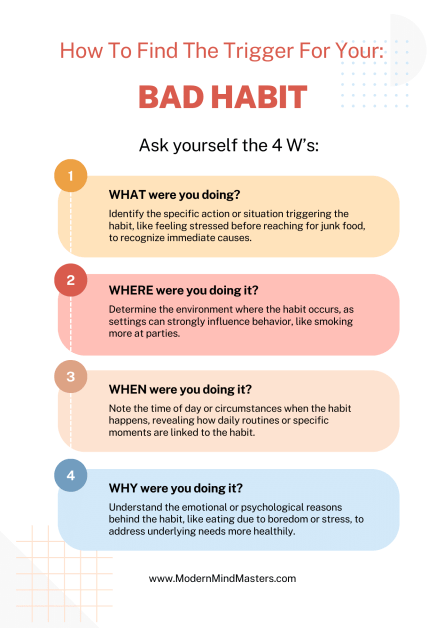
A key principle in breaking habits is not to abruptly cease the bad habit (going cold turkey has a high failure rate), but to substitute for it instead. Just as smokers often switch from nicotine to vaping as a distraction, you should seek a healthier alternative to engage in when the impulse to use social media arises.
In his book Atomic Habits, James Clear outlines how bad habits address certain needs in your life, and for that reason, it’s better to replace your bad habits with a healthier behavior that addresses that same need.
If you try to stop bad habits without replacing them, you’ll have needs that aren’t met, making it hard to keep up a “just don’t do it” routine for long.
So, to kick your social media habit/addiction, find a new one to replace it with. You will need to plan for how you will respond when you face the stress or boredom that prompts your bad habit.
How will you react when you feel the temptation to open the app during a dull moment at work? (Consider making a coffee instead.) How will you handle the urge to use Facebook as a way to procrastinate? (Try writing a single sentence for your work as an alternative.) Regardless of the situation or the challenge you’re facing, it’s important to have a strategy for what you’ll do in place of your bad habit.
The final part of the habit loop, the reward, is crucial because it provides positive reinforcement, making the habit more likely to be repeated. In simple terms, when a behavior is followed by a rewarding experience, the brain’s dopaminergic systems, responsible for motivation and reward, learn to associate the behavior with pleasure, encouraging its repetition.
With social media, the reward might be entertainment, a sense of connection, or a way to relieve boredom or stress. Once you understand the current reward, you can look for healthier ways to achieve a similar benefit. This means substituting the bad habit with a more positive behavior that provides a similar kind of reward, such as drinking a coffee or listening to music.
If you are really motivated, use a habit tracker to mark the days you successfully avoid or limit social media. Seeing your progress can be a reward in itself. You can find a template habit tracker here.
Remember, breaking a habit takes time and often multiple attempts. Be patient with yourself and recognize that changing the reward system is just one part of a larger process of habit modification. From personal experience, it can take weeks or months to achieve substantial change, with many failures. Don’t beat yourself up about it, just revisit this list, adjust your plan, and keep at it.
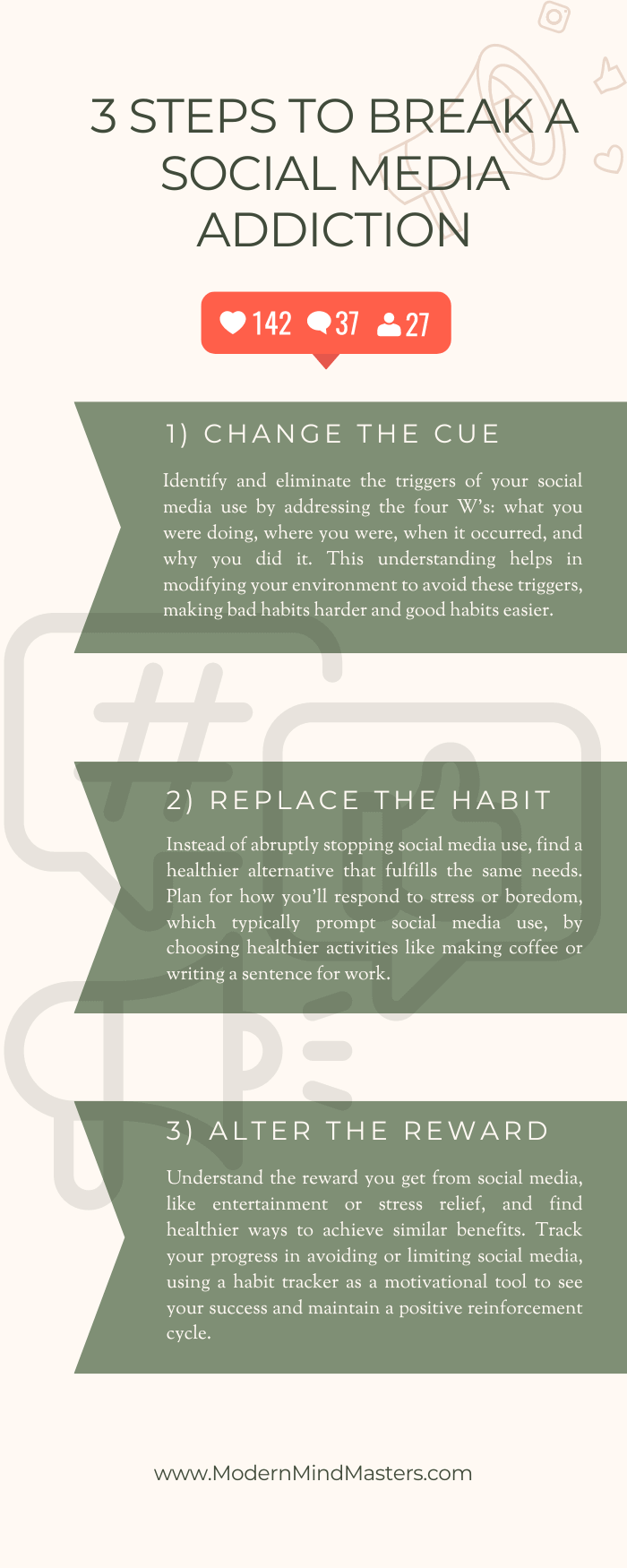
Breaking a social media addiction is a multifaceted challenge that requires understanding the underlying mechanisms of habit-making and breaking. The habit loop, consisting of a cue, routine, and reward, is central to this process.
To break any habit, you must identify the triggers (cues) that lead to social media use, replace the addictive behavior (routine) with healthier alternatives, and modify the reward system to prevent the negative trigger from occurring again.
Understanding that social media addiction, while not formally recognized as a medical condition, has real and significant impacts on various aspects of life, is the first step towards change. The high prevalence of this addiction, especially in younger demographics and certain cultural contexts, underscores the urgency of addressing this issue.
It’s important to approach habit change with patience and persistence. The journey towards breaking a social media addiction will likely involve setbacks, but with a structured approach and a willingness to adapt strategies as needed, it is entirely possible to regain control.
Ultimately, conquering social media addiction isn’t just about breaking a habit; it’s about reclaiming your time, focus, and life, one mindful click at a time.
While the DSM-5 does not officially recognize social media addiction as a medical condition, the overwhelming compulsion to engage with social media platforms can lead to disruptions in critical areas of life.
Symptoms of social media addiction may include excessive time spent using it, scrolling while uninterested, experiencing guilt, anxiety and stress, and irritability and frustration.
To break any behavioral addiction, you need to focus on the habit loop. This involves changing the cue (the trigger), modifying the routine (the behavior), and altering the reward.

Learn how exercise helps the brain, from reduced inflammation, slowed brain aging, and improved cognitive performance.
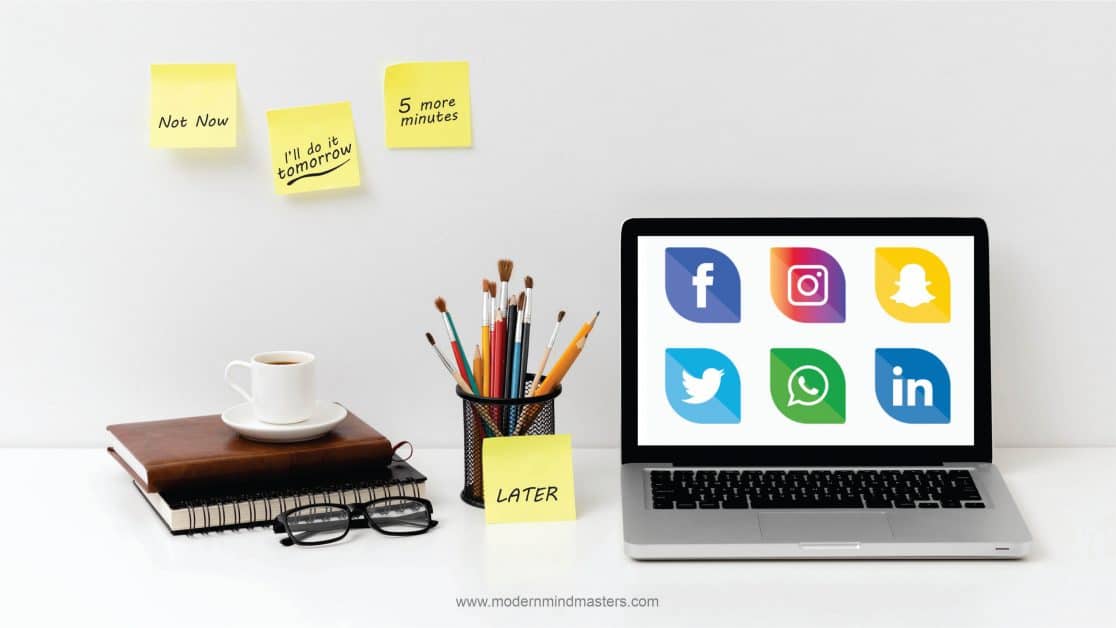
Procrastination may seem illogical, but there are strong biological reasons behind it. These tips will show you how to stop procrastinating for good.

Self-confidence is a lifelong battle, a way of life that must be approached with the right mentality. Learn everything you need to know to start believing in yourself.

Discover how to stop overthinking in 5 practical steps: embrace uncertainty, limit decision-making time, and focus on actionable steps.

While rates of noncommunicable disease are increasing, research has shown that sleep, diet, and exercise can be more effective at preventing disease than medication.

Neglected muscle maintenance causes all manner of symptoms, including lower back pain and headaches. Here’s how to prevent it.
© 2025 Modern Mind Masters - All Rights Reserved
You’ll Learn:
Effective Immediately: 5 Powerful Changes Now, To Improve Your Life Tomorrow.
Click the purple button and we’ll email you your free copy.